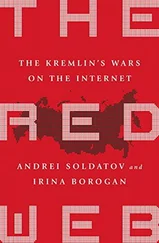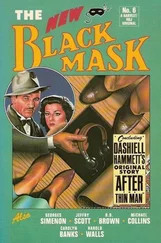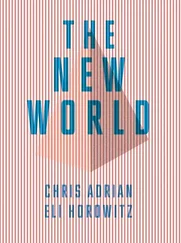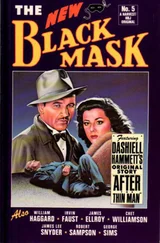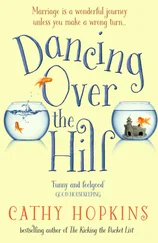Now, let me say a few things about op. 1, though I only have the song ‘Abschied’; I do not know the other song, ‘Dank’, so I cannot say anything about it. First of all, I noticed something which I feel a little proud to have detected. I have, on various occasions, developed the idea that Schoenberg’s approach can largely be understood as a synthesis – forgive the rudimentary term – as a synthesis of Brahms and Wagner. I mean this in the sense that the chromatic, expressive and highly sophisticated material of Wagner’s harmonic language has merged with Brahmsian compositional principles, namely his completely seamless and consistent thematic work. This is not a synthesis in the sense of simply adding together these two elements, of course; one has to imagine a consummate interpenetration of these two principles in the inner constitution of this music. Now, the op. 1 songs are certainly very little known. But the amazing thing I discovered is that these songs – that is, the one song I know – could genuinely be said to contain the Brahmsian and Wagnerian elements alongside each other, meaning that this aspect of a confrontation between these two separate and opposing schools that Schoenberg discovered in his youth, this confrontation can be traced back to very concrete things, namely stylistic elements that were found in his own work. First I will play you the beginning, where you will immediately see the connection to the Serious Songs by Brahms. 12I will then play you a further extremely Brahmsian passage, and after that one in which the Wagnerian influence – almost like a piano reduction from the Ring – displays itself in an almost touching manner. So it begins like this, and is incidentally in the same D minor as the first of the Four Serious Songs by Brahms [plays ‘Abschied’ [Farewell], Two Songs, op. 1, no. 2], and so on. And then the entire Brahmsian passage […] [plays], and so forth. […] And the Wagnerian passage that follows it goes like this [plays], and so on. So, you can see from this how these elements truly stand alongside each other in an exceedingly honest way. I would like to point out how little Schoenberg – and I think this is very characteristic – how little Schoenberg concealed this. After all, any normal New German composer would have been clever enough, shall we say, to hide such things. But this peculiar Schoenbergian sincerity or naïveté, whatever you wish to call it – and Schoenberg was essentially a very naïve composer; the concept of naïveté is a crucial part of him – simply registered these things the way they initially appeared in his own musical conception. Incidentally, Schoenberg always held the view that a younger composer could certainly refer to models if he were truly original, which went completely against the mindset of those who want to throw Wozzeck on the scrap heap as soon as they discover that the long interlude in the third act 13is similar in its overall idea to Siegfried’s funeral music from Götterdämmerung , 14yet have no trouble whatsoever if some so-called modern composer imitates composers of the seventeenth or eighteenth centuries in a laughable and paltry fashion. I have never been able to understand why there should be such oversensitivity on the one side and this indescribably low standard on the other, but perhaps that is because I am one of these evil intellectuals.
But I would like to draw your attention to another matter concerning these very first songs by Schoenberg. These songs are unusually long – the one I have, at least, and I assume the other is similarly long – much like the Proses lyriques by Claude Debussy, 15and indeed their whole fabric, including the somewhat luxuriant piano reduction-like treatment of the accompaniment, is highly reminiscent of Debussy’s Proses lyriques , even if they are not yet as specific in their character, not yet as original as this work by Debussy. Evidently both masters made, around the same time, an attempt of sorts for music to move from a more narrowly lyrical character to prose, for lyricism itself to gain a greater breadth, both inwardly and outwardly, than it had previously possessed, and it is very interesting for Schoenberg’s sense of form that he somehow notices that this kind of breadth, of almost oratorical breadth, that this cannot really be reconciled with the piano Lied genre. These things are very difficult to explain, but I think that you will immediately have a sense of what I mean. Very long, elaborated songs cannot really be written as songs with a piano, only as songs with an orchestra. An overlong piano Lied is of a similarly impossible nature as an excessively long piece for a single string instrument, for example. And Debussy, much like Schoenberg, sensed that in those early 1890s, with the result that both crafted these works in, I would almost say, in the character of opera fragments. But I wanted to touch on that only in order to point out a problem that I think it would be highly productive to consider systematically, namely the connection that actually exists between musical dimensions, between musical scale and the respective sonic material used in the music. It would be misguided to believe that these aspects – that, crudely speaking, the form is independent from the disposition of sonorities, the disposition of colours and the entire volume of the sound; rather, these elements, like everything in a work of art, all relate to one another, and one should really examine this interrelatedness in a very precise manner. But that is just an aside.
Now, the first work by Schoenberg that truly shows its claws openly is the op. 2 songs. And, to explain these songs to you, I think I should take a moment to mention something extra-musical: the concept of art nouveau. In their choice of texts, but also the way they themselves are crafted, these songs are very much products of art nouveau, and one can see elements of art nouveau running through Schoenberg’s entire oeuvre, both in his selection of texts and in other aspects, just as one can find similar elements among the great revolutionary painters of his generation, which in a certain sense is, after all, the pre-Picasso generation. Think of van Gogh, where this is very strong, and think also of Munch. So, in this sense, Schoenberg unquestionably has his roots in art nouveau. Now, I cannot embark on a genuine philosophical theory of art nouveau, although it would be extremely important. I will only say that art nouveau rests – and this is one of its formal characteristics – on the attempt to break out of the realm of conventionalized bourgeois forms but still stay within the circle of forms predetermined by the bourgeois world. And that element in art nouveau which is viewed today as so complacently laughable by the gaze that finds anything strange if it contains a contradiction – this is precisely the element of contradiction between breaking out and respecting the conventions after all, this decision to stay within the established world of the nineteenth century. Now, if you will permit this somewhat formal definition, which barely gives you any actual taste of art nouveau, you will see that the works from this phase, which could very much be termed Schoenberg’s art nouveau phase, have exactly this character of wanting to break out and at the same time stay inside. That, incidentally – and I would just like to touch on it in advance – is exceedingly characteristic of Schoenberg in general, namely the fact that his way of breaking out is not like that of Richard Strauss, namely a somewhat non-committal step into new territory; rather, he takes the traditional elements extremely seriously, but so seriously that the very seriousness with which he handles them transforms them into something else. Or, conversely: the breaking out itself occurs with a kind of fear and trembling; it occurs in such a way that he continually tries to keep whatever he feels compelled to include somehow within the framework of the traditional means. And the tension between these two elements, this is really what gave Schoenberg a revolutionary force that goes far beyond what was possessed by the impressionist musicians, who did not have this force of resistance in themselves at all, who did not have these two conflicting elements working away at each other, and whose solutions consequently remained far less radical and much more comfortable. That applies to Debussy in France and to Ravel, in exactly the same way it applied to Richard Strauss in Germany, or indeed Max Reger.
Читать дальше

